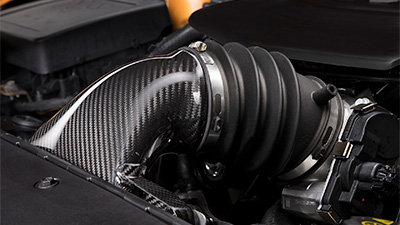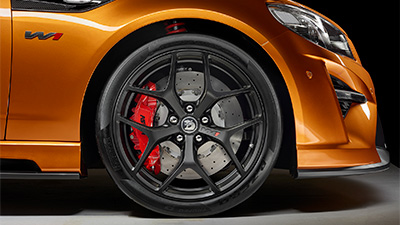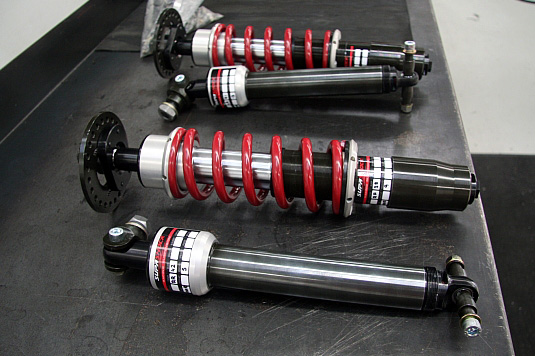An LS9 in a VF Commodore, ‘So what’ you say? Oh, but the GTS-R W1 is so much more.
At a hefty pricetag of $169,990 (of around $35k which is engine alone) only 300 units are earmarked for production commencing in April this year.

Mechanic.com.au Quick-Tip
Both the LSA and LS9 supercharged engines are built on the naturally aspirated SBC LS3 architecture.
They are both 6.2L engines that have identical compression ratio, bore and stroke.
The LS9 sports a larger blower (2.3L) and beefed up internals as mentioned below.
Dropping this monster powertrain into a VF seemed to present a plethora of challenges, each of which Holden's engineers happily rose to the occasion of, in order to give the iconic Aussie-built Commodore family one hell of a send off.
The first of which being that the LS9 had to run the air intake over the top of the radiator, however, due to the fact the LS9 runs a dry sump (Pumping just a shade under 10L of oil around the engine and through a 9 plate water to oil cooler) the oil separator sits right smack dab where the airbox would typically sit.
Although the GTS-R has a number of carbon fibre appointments to keep in trend with the VS based GTS-R of yesteryear, engineers were forced to use carbon fibre for the air intake as it was deemed the only material strong enough to survive how thin it needed to be in order to fit!
The radiator (fed by a high volume water pump) had to be “leant back” six degrees in order for it to fit properly aswell as the fitment of a specially designed air duct to direct air to the transmission cooler. On top of this, add a double-brick intercooler (as opposed to the single-brick cooler fitted to the LSA) which sits ontop of the blower, claiming a combined reduction in charge-air temps by 60 degrees Celcius.
The blown 6.2L LS9 includes a 4-lobe, Eaton roots-style blower, Forged Aluminium pistons, Titanium rods and inlet valves and hollow stem, steel exhaust valves all spinning up to 6600rpm and pumping out a staggering 474kw/815nM housed in an alloy (cast iron sleeved) block.

Joel Stoddart, Director Of Engineering, HSV
Swallowing 815nM of torque is no easy task and as it stood, there was no TR6060 (Tremec 6 Speed Manual Transmission) build that would fit the Zeta platform (A rear wheel drive platform engineered by Holden Australia, used in production between 2006-2017)
The solution was an MH3-spec TR6060; a close-ratio six-speed, triple synchro box, rated to 850Nm, however it wasn’t just going to be a drag and drop operation. Numerous changes were required which started to create a domino effect.
“We knew that the gear set was around with Corvette, but we couldn’t actually apply it in our vehicle, so there was a lot of work put in. I said to our program manager a year ago, ‘This could really kill the program’. But now it looks, smells, feels the same as the old transmission, but we put a lot of work in.” says HSV engineering director Joel Stoddart.
To make and break the power, Holden utilised a 260mm ZF Sachs twin-plate clutch bolted up to a single mass flywheel, which necessitated a special redesign of the bellhousing and input shaft.
The end result being a box that was good for 850nM and can do a whisker under 100km/hr in first gear!

So apparently it takes a bit of work to pull up 1900kg propelled by 424kW of power.
That's all taken care of by Six-pot AP Aluminium Racing calipers with massive 410mm, floating two peice, cross-drilled, S-vane rotors on the front and 372mm cross drilled rotors pulling up the back end. Holden claim a 25% increase of pad surface area over the GTS.
That's a better braking package than that currently used on V8 Supercars!
Mechanic.com.au Quick-Tip
Single Piece Rotor - Hat and ring are a single casting. (Typically used in street applications)
Two Piece Rotor - Hat (Typically aluminium) is a seperate part to the ring (Typically used in high performance and racing applications)
Advantages of a Two Peice Rotor
-Reduced unsprung weight
-Reduced wheel bearing temperatures
-Eliminated pad knock-off

Note: Supashock Struts pictured for illustration purposes only (Not fitted to GTS-R W1)
As far as the suspension in the W1 is concerned, they threw HSV’s MRC (Magnetic Ride Control) system in the bin, utilised the vehicles existing mounting setup and injected it with a track-inspired package by Supashock who is a partner of Walkinshaw Racing's Supercar division.
The front end is comprised of coil-over upside down monotube front struts with double acting dual-bush lateral support and direct acting stabiliser bar. The rear end is a multilink IRS setup with conical coil-overs with built in lateral support.
This setup rides twice as stiff and 5mm lower than a standard GTS!

The W1 sports a massive pair of shoes; 20x9” on the front and 20x10” on the rear wrapped in Pirelli P Zero Trofeo R’s, with a 265mm and 295mm footprint respectively. Once you have chewed through the factory tyres, the replacements will set you back around $3000.
But hey, if you can afford to drop $170k on a car, what's an extra $3k for tyres?
With a top speed pegged at about 300km/hr (once you work out how to defeat the speed limiter at 250km/hr) and speculated to run a low 12 second pass on the quarter mile this is one mean machine and an iconic peice of Australian Motoring History!